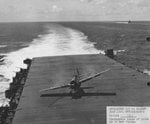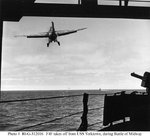CobberKane
Banned
- 706
- Apr 4, 2012
Hello everyone,
Here is a request with a bit of a difference. As part of the Arts degree I'm currently doing I have to write some short fiction pieces, one of which stipulates a character in a situation of conflict. So I'm doing it from a fighter pilot's perspective of the Battle of Midway. Now, to get the technical and historical aspects of the story right I could either:
A: Do a lot of individual research
B: Pick the brains of a bunch of well-informed people who have nothing better to do than contribute their expertise free of charge.
I'm going to go with option B. Your reward for this mission (should you chose to accept it) is that in days to come I will reveal myself to you all as an awesomely successful novelist and you can bask in the glory of having helped elevate me into the ranks of the literati - kind of like you were engaged with a forum on vampires and helped Stephen King write 'Salem's Lot'.
So, my initial queries are: What were the weather conditions like at the time of Midway? I'm thinking here primarily of ocean swell and cloud cover. And did the F4F Wildcat as used in the battle have a life-raft, and if so how did the pilot get to it and how big was it?
A preemptive thank you to all for your help
Here is a request with a bit of a difference. As part of the Arts degree I'm currently doing I have to write some short fiction pieces, one of which stipulates a character in a situation of conflict. So I'm doing it from a fighter pilot's perspective of the Battle of Midway. Now, to get the technical and historical aspects of the story right I could either:
A: Do a lot of individual research
B: Pick the brains of a bunch of well-informed people who have nothing better to do than contribute their expertise free of charge.
I'm going to go with option B. Your reward for this mission (should you chose to accept it) is that in days to come I will reveal myself to you all as an awesomely successful novelist and you can bask in the glory of having helped elevate me into the ranks of the literati - kind of like you were engaged with a forum on vampires and helped Stephen King write 'Salem's Lot'.
So, my initial queries are: What were the weather conditions like at the time of Midway? I'm thinking here primarily of ocean swell and cloud cover. And did the F4F Wildcat as used in the battle have a life-raft, and if so how did the pilot get to it and how big was it?
A preemptive thank you to all for your help
Last edited:


